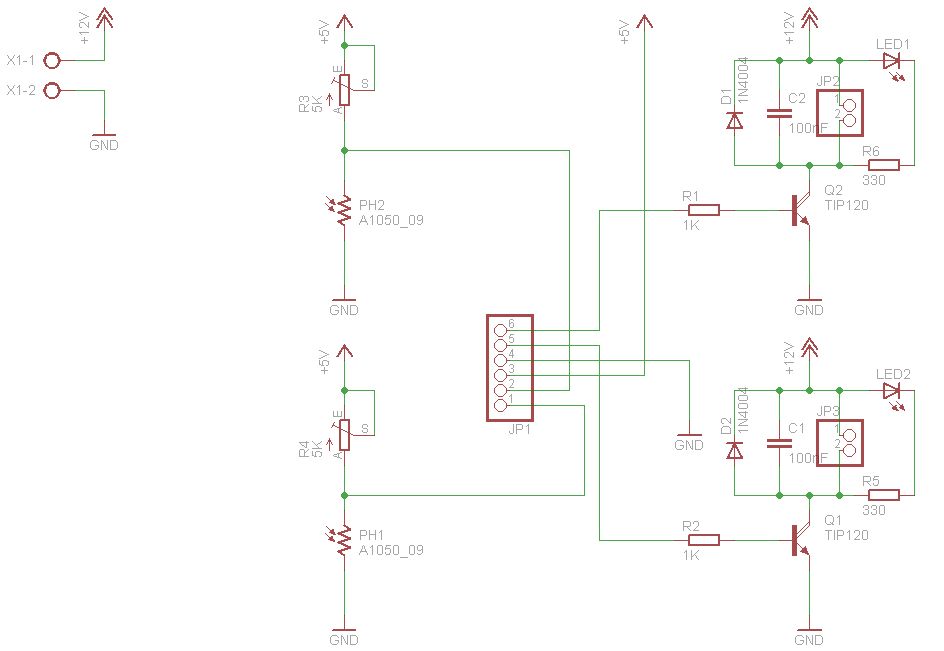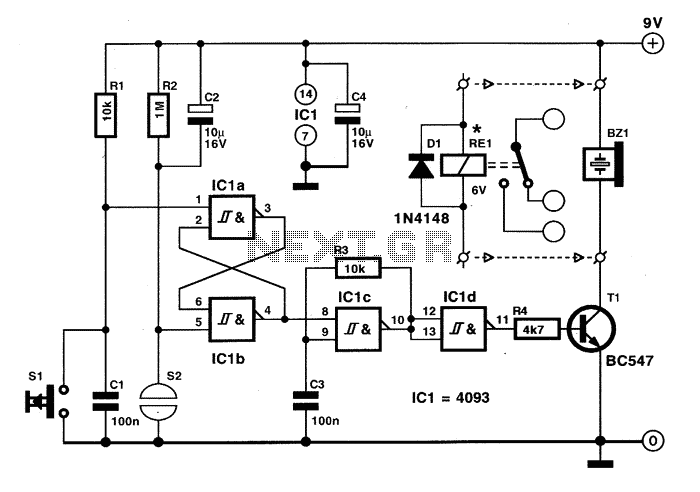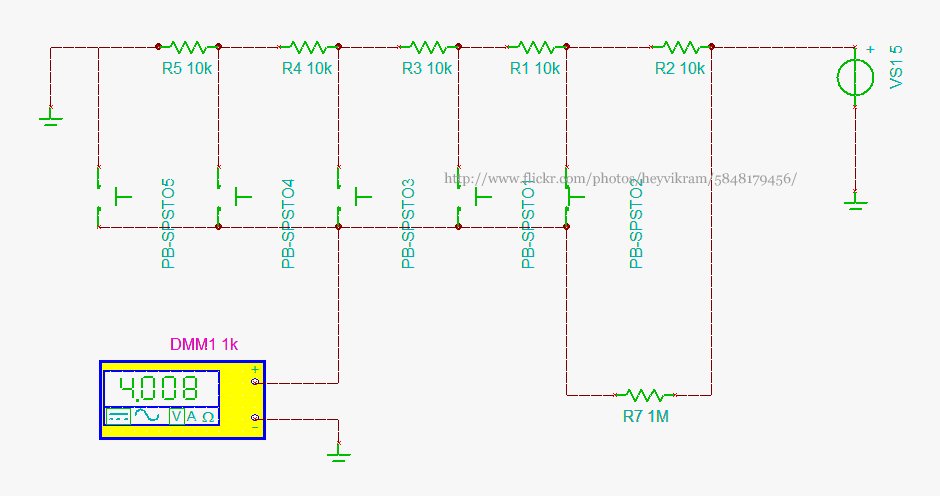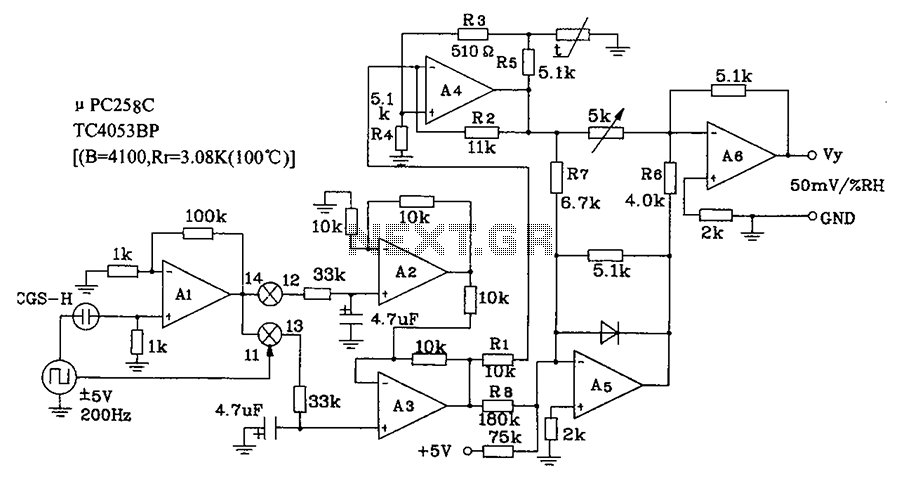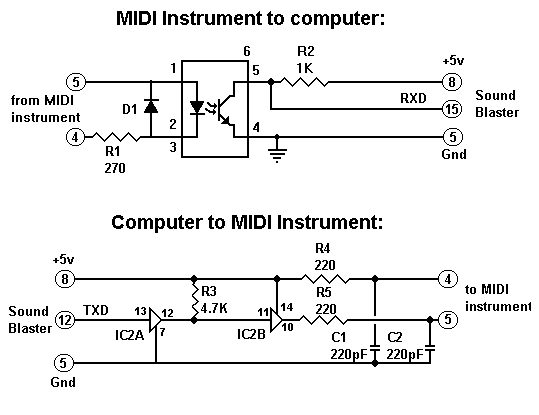
Arduino Midi
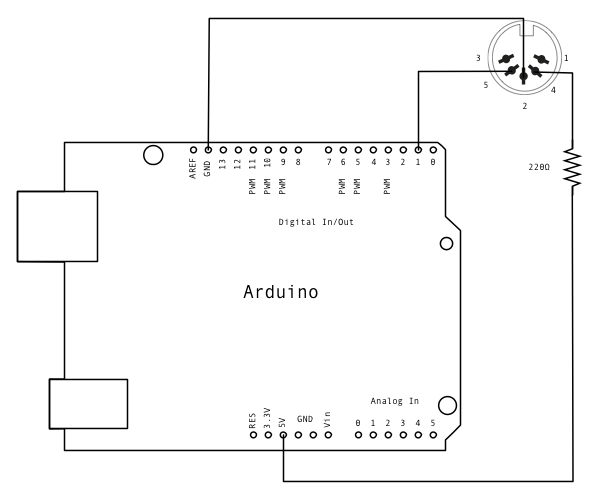
MIDI, or Musical Instrument Digital Interface, is a protocol designed for controlling synthesizers, sequencers, and various musical devices. MIDI devices are typically categorized into two main classes: controllers, which generate MIDI signals based on user input, and synthesizers, which include samplers and sequencers that receive MIDI data to produce sound, light, or other effects. MIDI operates as a serial protocol at a rate of 31,250 bits per second. The built-in serial port of Arduino boards, including the Mega, is capable of transmitting data at this speed. MIDI data is organized into two types of bytes: command bytes and data bytes. Command bytes have values ranging from 128 to 255 (0x80 to 0xFF in hexadecimal), while data bytes range from 0 to 126 (0x00 to 0x7F in hexadecimal). Commands encompass actions such as note on, note off, and pitch bend, while data bytes convey information like note pitch, velocity (loudness), and pitch bend amount. For further information, refer to the MIDI specification or various MIDI Protocol Guides available online.
MIDI (Musical Instrument Digital Interface) serves as a crucial protocol that facilitates communication and control between various musical devices, including synthesizers and sequencers. The architecture of MIDI allows for the integration of multiple devices within a single performance setup, enabling musicians to create complex compositions and arrangements.
MIDI controllers, which are devices that generate MIDI signals, play a vital role in this ecosystem. They capture human input through various interfaces, such as keyboards, drum pads, or MIDI wind controllers, and convert this input into MIDI messages that can be transmitted to other devices. These messages are typically formatted as a series of bytes, ensuring efficient and precise communication.
On the other hand, synthesizers and samplers act as the receiving end of MIDI data. They interpret the incoming MIDI messages and produce corresponding audio signals or trigger specific actions, such as altering effects or adjusting parameters. This interaction between controllers and synthesizers is what allows for real-time performance and manipulation of sound.
The MIDI protocol's operation at a baud rate of 31,250 bits per second ensures that data can be transmitted quickly and reliably. The ability of devices such as the Arduino Mega to handle this rate allows for innovative projects and applications, where custom MIDI controllers or synthesizers can be developed with relative ease.
The distinction between command bytes and data bytes is fundamental to understanding MIDI communication. Command bytes, which always have values of 128 or higher, dictate specific actions to be performed, such as starting or stopping a note. In contrast, data bytes provide the necessary parameters for these commands, such as the pitch of the note or the intensity of the sound. This structured approach to data organization allows for efficient processing and minimizes the potential for errors during transmission.
For those interested in delving deeper into the functionality and specifications of MIDI, a wealth of resources, including the official MIDI specification and various online guides, are readily available. These materials provide comprehensive insights into the intricacies of MIDI communication, enhancing the understanding of both novice and experienced users in the field of electronic music production.MIDI, the Musical Instrument Digital Interface, is a useful protocol for controlling synthesizers, sequencers, and other musical devices. MIDI devices are generally grouped in to two broad classes: controllers (i. e. devices that generate MIDI signals based on human actions) and synthesizers (including samplers, sequencers, and so forth).
The latt er take MIDI data in and make sound, light, or some other effect. MIDI is a serial protocol that operates at 31, 250 bits per second. The Arduino`s built-in serial port (all of them on the Mega as well) can send data at that rate. MIDI bytes are divided into two types: command bytes and data bytes. Command bytes are always 128 or greater, or 0x80 to 0xFF in hexadecimal. Data bytes are always less than 127, or 0x00 to 0x7F in hex. Commands include things such as note on, note off, pitch bend, and so forth. Data bytes include things like the pitch of the note to play, the velocity, or loudness of the note, and amount of pitch bend, and so forth. For more details, see the MIDI specification, or one of the many MIDI Protocol Guides on the Web. 🔗 External reference
MIDI (Musical Instrument Digital Interface) serves as a crucial protocol that facilitates communication and control between various musical devices, including synthesizers and sequencers. The architecture of MIDI allows for the integration of multiple devices within a single performance setup, enabling musicians to create complex compositions and arrangements.
MIDI controllers, which are devices that generate MIDI signals, play a vital role in this ecosystem. They capture human input through various interfaces, such as keyboards, drum pads, or MIDI wind controllers, and convert this input into MIDI messages that can be transmitted to other devices. These messages are typically formatted as a series of bytes, ensuring efficient and precise communication.
On the other hand, synthesizers and samplers act as the receiving end of MIDI data. They interpret the incoming MIDI messages and produce corresponding audio signals or trigger specific actions, such as altering effects or adjusting parameters. This interaction between controllers and synthesizers is what allows for real-time performance and manipulation of sound.
The MIDI protocol's operation at a baud rate of 31,250 bits per second ensures that data can be transmitted quickly and reliably. The ability of devices such as the Arduino Mega to handle this rate allows for innovative projects and applications, where custom MIDI controllers or synthesizers can be developed with relative ease.
The distinction between command bytes and data bytes is fundamental to understanding MIDI communication. Command bytes, which always have values of 128 or higher, dictate specific actions to be performed, such as starting or stopping a note. In contrast, data bytes provide the necessary parameters for these commands, such as the pitch of the note or the intensity of the sound. This structured approach to data organization allows for efficient processing and minimizes the potential for errors during transmission.
For those interested in delving deeper into the functionality and specifications of MIDI, a wealth of resources, including the official MIDI specification and various online guides, are readily available. These materials provide comprehensive insights into the intricacies of MIDI communication, enhancing the understanding of both novice and experienced users in the field of electronic music production.MIDI, the Musical Instrument Digital Interface, is a useful protocol for controlling synthesizers, sequencers, and other musical devices. MIDI devices are generally grouped in to two broad classes: controllers (i. e. devices that generate MIDI signals based on human actions) and synthesizers (including samplers, sequencers, and so forth).
The latt er take MIDI data in and make sound, light, or some other effect. MIDI is a serial protocol that operates at 31, 250 bits per second. The Arduino`s built-in serial port (all of them on the Mega as well) can send data at that rate. MIDI bytes are divided into two types: command bytes and data bytes. Command bytes are always 128 or greater, or 0x80 to 0xFF in hexadecimal. Data bytes are always less than 127, or 0x00 to 0x7F in hex. Commands include things such as note on, note off, pitch bend, and so forth. Data bytes include things like the pitch of the note to play, the velocity, or loudness of the note, and amount of pitch bend, and so forth. For more details, see the MIDI specification, or one of the many MIDI Protocol Guides on the Web. 🔗 External reference
